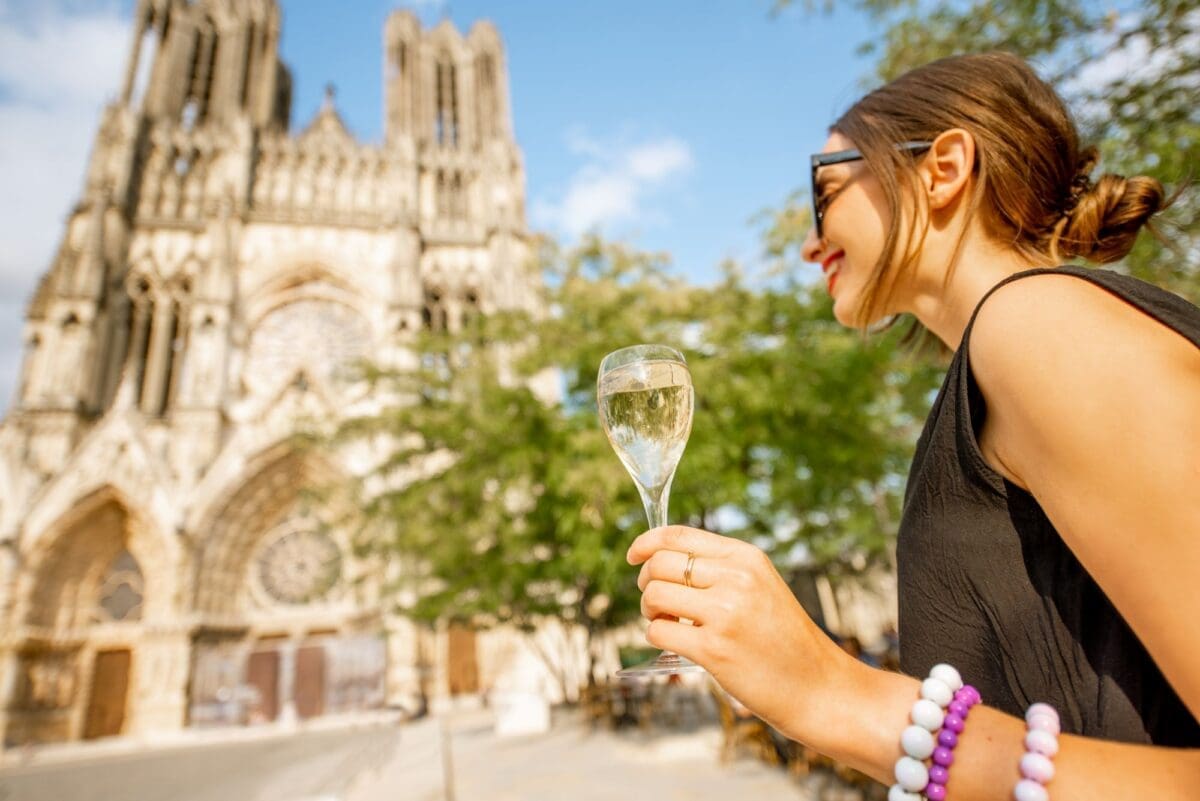8 Temples in Sri Lanka For Your Bucket List
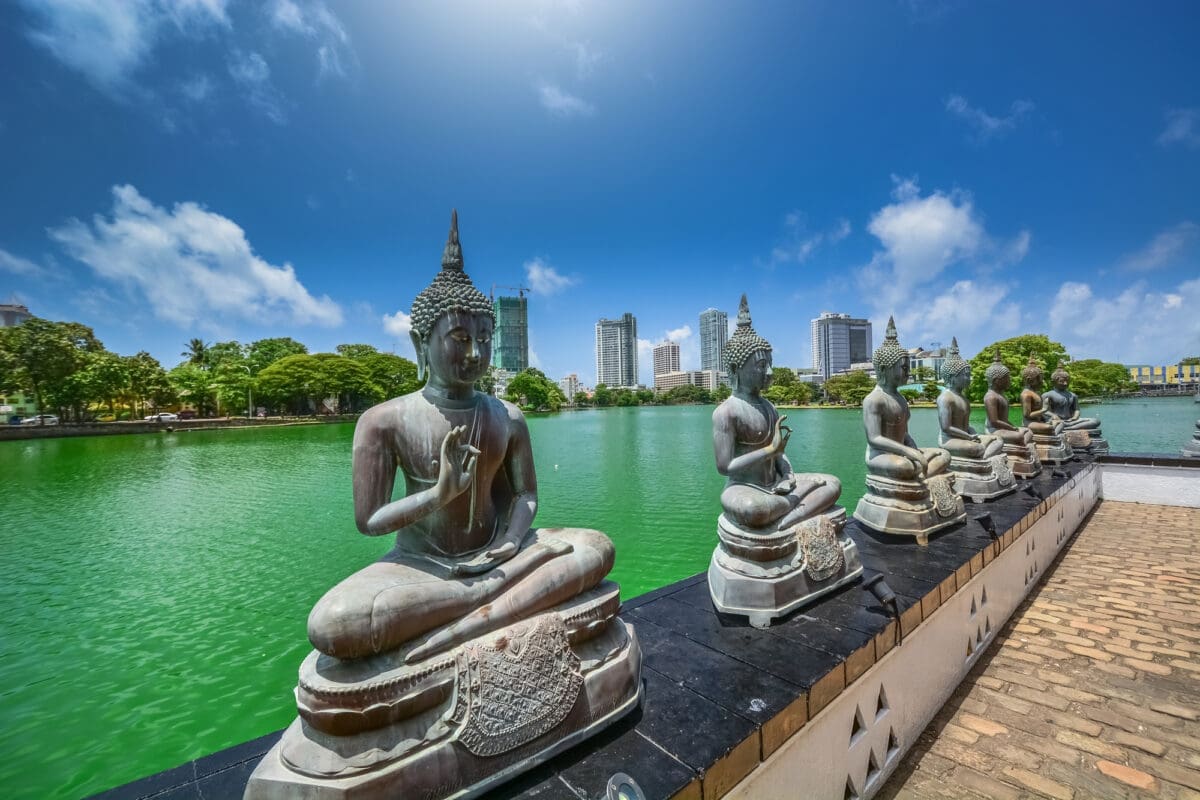
Sri Lanka is one of the top islands in the Indian Ocean that deserves a spot on your bucket list. However, beyond its pristine beaches and verdant landscapes lies a network of ancient temples that draw believers and tourists from around the globe. These sacred sites, representing Buddhism, Hinduism, Islam, and Christianity, serve as expressions of the country’s diverse religious landscape.
Each temple tells a story of faith, tradition, and history, making them must-visit destinations for travelers seeking a deeper understanding of the country’s spiritual and cultural practices. In this article, we offer you a guide to the top temples in Sri Lanka to visit when in the country.
Don’t miss these related articles!
Top Island Nations to Visit In East Africa
Best Destinations for Solo Female Travelers of 2024
Travel Insurance Essentials: What You Need to Know Before Your Trip
8 Must Visit Temples in Sri Lanka
There are numerous temples in Sri Lanka to visit. This is a good thing because you have quite an array of options at your disposal. However, here’s a quick guide to the most famous temples.
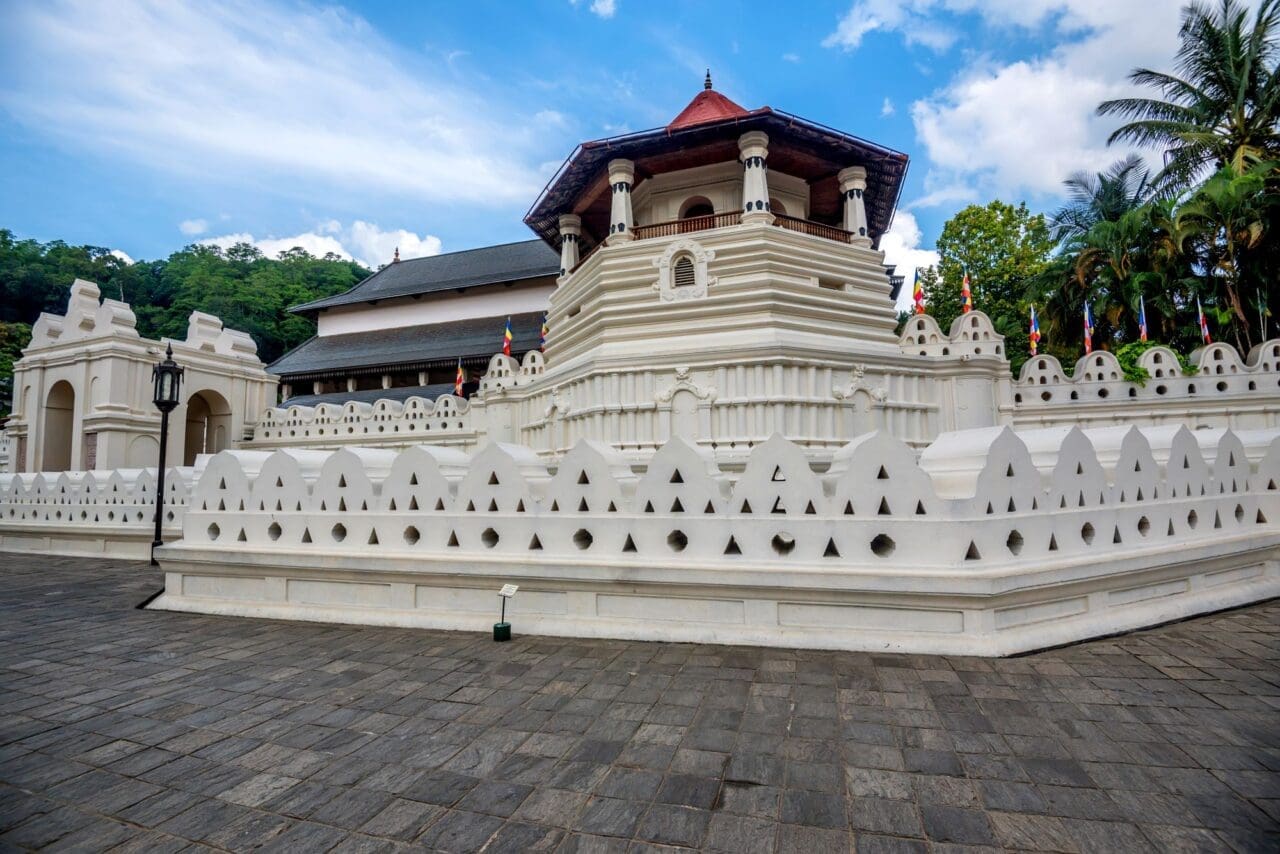
Temple of the Sacred Tooth Relic
One of the most revered sites, Sri Dalada Maligawa, also known as the Temple of the Sacred Tooth Relic, is believed to house the tooth relic of the Buddha. This temple is a pivotal element in the spiritual and political history of Sri Lanka. In fact, there is a belief that anyone holding the relic holds the governance of the country. It’s a center of pilgrimage for Buddhists.
Besides touring the temple, you can also plan to attend the Esala Perahera. This is an annual festival held in July and August. It features a vibrant parade of traditional dancers, drummers, and ornately decorated elephants, drawing visitors and devotees from around the world.
Keerimalai Naguleswaram Temple
Keerimalai Naguleswaram Temple, one of the oldest shrines, significantly contributes to the Hindu cultural influence in Sri Lanka. This Lord Shiva dedicated temple is in the Jaffna Peninsula and is revered by devotees who believe in the temple’s purifying power. It stands as a cornerstone of Hindu tradition and spirituality, attracting a multitude of worshippers annually.
Dambulla Cave Temple
The Dambulla Cave Temple or the Golden Temple of Dambulla, is a UNESCO World Heritage Site that consists of over 80 documented caves. It is a stunning example of Buddhist art and architecture that has been preserved for over 2,000 years.
The major attractions are spread over five main caves, which contain statues and paintings related to Buddha and his life. This temple boasts over 157 Buddha statues.
Additionally, the ascent to the caves offers a moderate hike which rewards visitors with not only religious art but also breathtaking views.
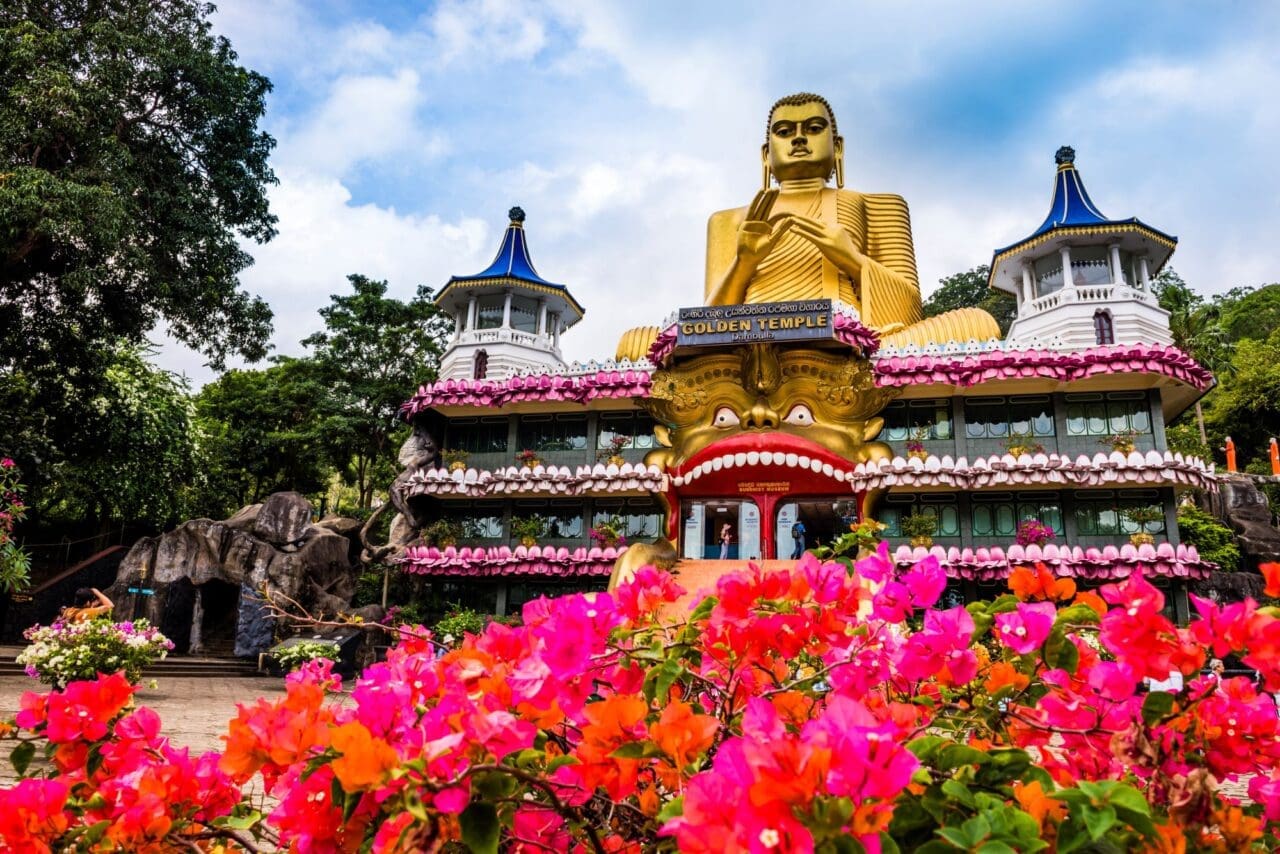
Koneswaram Temple
Koneswaram Temple, perched on Swami Rock in Trincomalee, stands as a monumental testament to Lord Shiva. The temple’s existence dates back millennia, and its intricate stone carvings and paintings depict scenes from Hindu epics, exemplifying the aesthetic zenith of Hindu temple architecture. The temple’s position on a cliff overlooking the Indian Ocean is both spiritually and culturally significant, symbolizing a fusion of natural and divine beauty.
Gadaladenyia Vihara Temple
Constructed on a rock plateau in the 14th century, the Gadaladenyia Vihara temple illustrates a blend of Sri Lankan and South Indian architectural styles. Its structure is heavily influenced by the Dravidian architecture typical of South India but incorporates local elements.
The temple is renowned for its intricate stone carvings and the large seated Buddha statue that dominates the main shrine room. The carvings depict various Hindu deities alongside Buddhist figures, showcasing the syncretic cultural influences present in late medieval Sri Lanka.
Ruwanweli Maha Seya Temple
Ruwanweli Maha Seya is a majestic white stupa (dome-shaped structure), that dominates the skyline of Anuradhapura. Built in the 2nd century BCE, it enshrines relics believed to be from the Buddha’s hair and clothing. The stupa’s pristine white facade embodies the peace and tranquility central to Buddhist philosophy. Visitors can admire the intricate details adorning the base, including elephant figures symbolizing strength and stability.
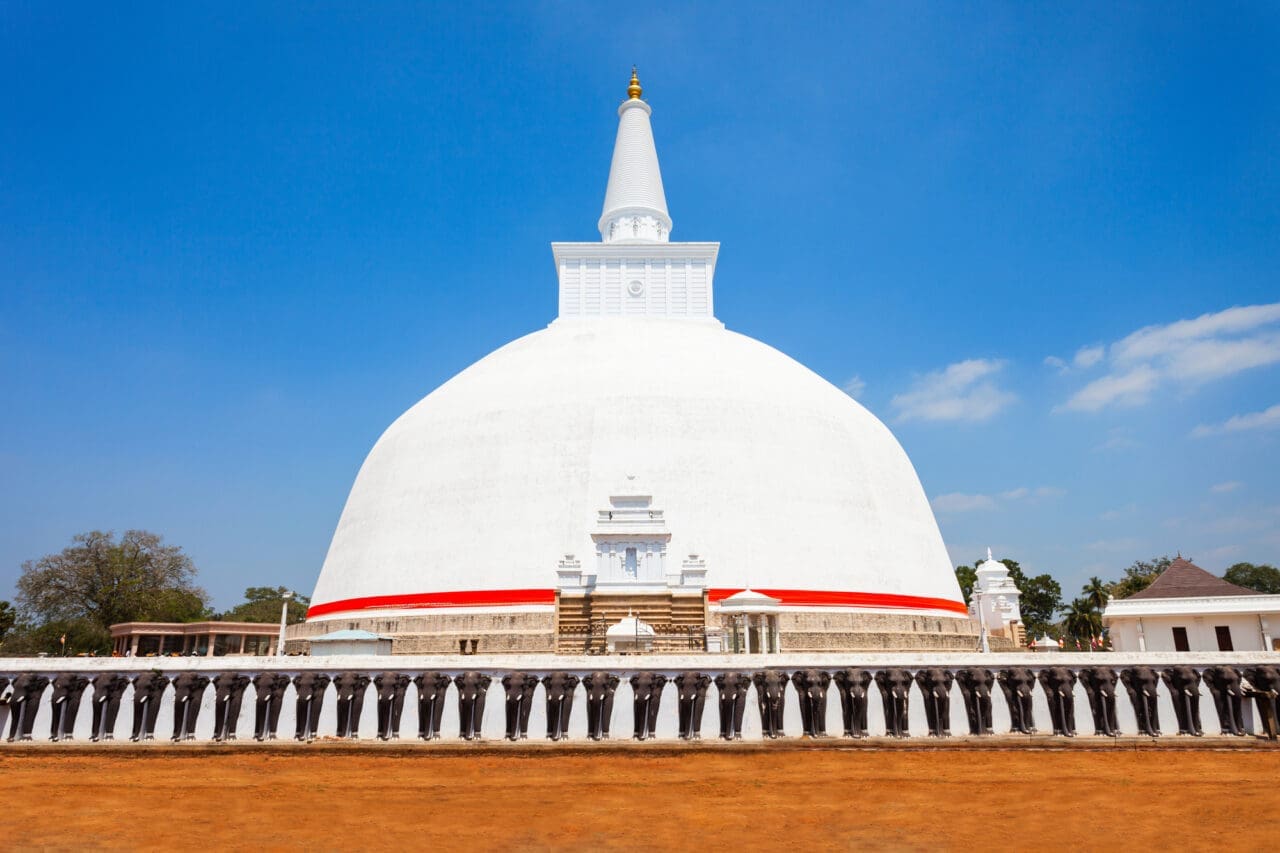
Jetavanaramaya Temple
In contrast, Jetavanaramaya, built several centuries later, presents a more imposing presence. Once the tallest dagoba (dome-shaped monument) in the world, its ruins stand at a staggering 40 meters (130 feet) tall.
Though partially crumbled over time, Jetavanaramaya still exudes an air of grandeur, a testament to the advanced architectural skills of its era. Historical records suggest it housed relics believed to be part of the Buddha’s collarbone. Exploring the surrounding ruins and learning about the monument’s past allows visitors to connect with the deep roots of Buddhism in Sri Lanka.
Kataragama Temple
The sacred town of Kataragama, nestled in Sri Lanka’s southeastern region, is home to a unique temple complex that transcends singular religious affiliation. The Kataragama Temple draws devotees from Buddhist, Hindu, and indigenous Vedda backgrounds, creating a captivating array of faith and cultural practices.
At the heart of this complex lies the focus of Buddhist veneration: Kataragama deviyo. This deity is believed to be a guardian spirit associated with protection and good fortune. Hindu devotees, on the other hand, associate the temple with the powerful war god Murugan. The Vedda people, Sri Lanka’s indigenous inhabitants, hold their own distinct beliefs concerning the resident deity of Kataragama. This remarkable confluence of faith fosters a spirit of tolerance and mutual respect within the temple complex.
Respectful Temple Etiquette to Observe
As you visit temples in Sri Lanka, it’s important to remember that these are active places of worship, not merely tourist attractions. As such, you must respect temple etiquette when touring. Here are some guidelines to ensure a respectful and enriching experience;
- Dress modestly: Opt for clothing that covers your shoulders and knees. This demonstrates respect for the sanctity of the religious site.
- Remove footwear: Before entering shrines or designated prayer areas, kindly remove your shoes. This is a common practice.
- Be mindful of ongoing ceremonies: If you encounter a religious ceremony in progress, observe quietly from a distance. Avoid disrupting the serenity of the moment.
- Maintain a low voice: Speak softly and avoid loud conversations within the temple complex. This allows devotees to focus on their prayers and meditation.
- Seek permission for photography: Not all temples permit photography. It’s essential to inquire before taking pictures, particularly within inner sanctums.
Final Word
As you can see, there are numerous temples in Sri Lanka to visit. Whether you are a devout pilgrim or a curious traveler, the temples of Sri Lanka offer a unique blend of serenity, architecture, and history, making them indispensable stops on your travel itinerary. Regardless of the temple you choose to visit, ensure that you respect the set rules and guidelines. Additionally, it’s important to dress appropriately.
FAQ
What Should I Wear When Visiting Temples in Sri Lanka?
It’s important to dress modestly out of respect for the religious nature of these sites. Opt for clothing that covers your shoulders and knees. Avoid revealing clothing like tank tops or shorts. If you’re unsure, err on the side of caution and choose attire that provides more coverage.
Is There a Dress Code For Men and Women?
Generally, the dress code applies to both men and women. Men should avoid sleeveless shirts and shorts above the knee. Women can wear long skirts or pants, and opting for a scarf to cover bare shoulders is a thoughtful gesture.
Can I Take Photographs Inside the Temples?
Photography policies can vary between temples. It’s courteous to inquire with a staff member or attendant before taking pictures, particularly within inner shrines or areas where ceremonies might be taking place.

